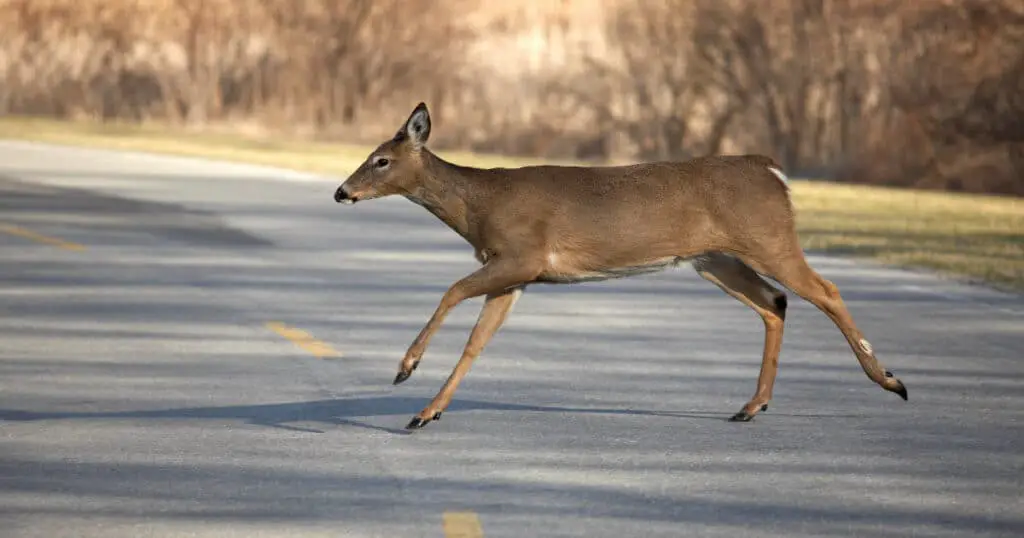Vehicle collisions with deer can be extremely dangerous, and not just for the animal. Drivers and passengers have been seriously injured and even killed in such accidents, and enormous amounts of damage can be done to the vehicle involved. It is not uncommon for deer to run into roadways, and while deer are often struck by cars, if you’re wondering “why do deer run into cars?” there are multiple explanations.
Adult white-tailed deer are large animals, and this is why they can cause so much damage when involved in a collision. Such a deer, especially a male, can weigh as much as 300 pounds.
Deer and vehicle collisions tend to be most common during certain times of year and at night. The more deer that are in a given area and the more frequently they are moving around are significant factors. Accidents are far more likely to happen at night, too, when it’s more difficult to see.
As more rural areas are developed, road construction and densely populated deer habitat overlap more and more. When deer aren’t accustomed to traffic noise, they will easily be spooked. This is one reason why a deer in the road might feel panicked and confused, not realizing the direction in which it’s running.
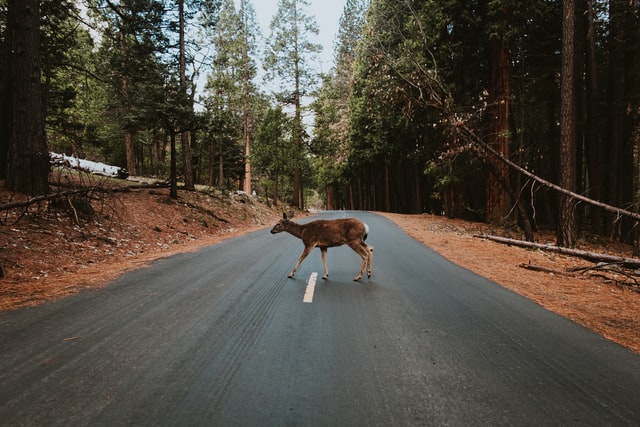
Not only that, deer that are used to hearing the sound of cars tend to become too used to it, and start coming too close to the roads. This too can quickly lead to problems.
Times of Year That Deer Run Into Cars
Table of Contents
ToggleFall is an especially hazardous time for accidents involving deer. This is because it is mating season, so deer are wandering over larger areas and moving around more often.
Deer also tend to act more erratically at this time of year, making their behavior more difficult to predict. The fall is also a time of more frequent collisions involving deer because of the shorter days.
What Kind of Vision do Deer Have?
Some people wonder if deer have poor vision and that’s why they run into cars.
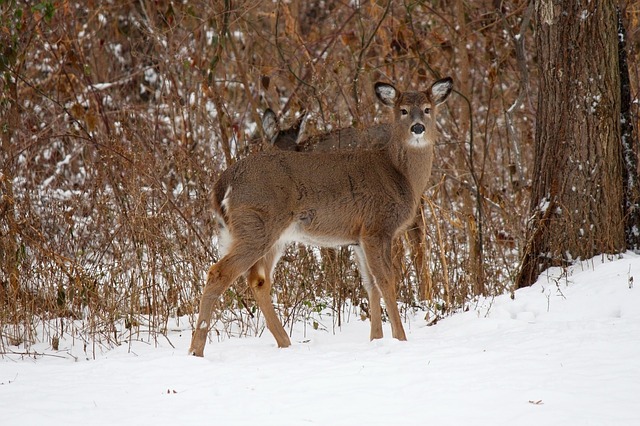
However, that’s not the case. Deer actually have excellent vision, including superior peripheral vision. Part of the reason for this is the fact that deer eyes are positioned on the sides of their head.
A deer’s retina has more photoreceptors than we have, so deer have excellent vision at night. This superior vision is part of the reason why they are so often stunned by bright lights. The lights can make it difficult for them to see, thus the deer run into cars. Imagine what your vision is like after staring into a bright light. You as a human being, however, need the lights so that you can drive safely and be able to see deer in advance.
Another useful fact about deer vision is the fact that they primarily perceive things right in front of them, very seldom trying to look up ahead. This may be something else to keep in mind while you’re driving.
Why Do Deer Run into Cars?
One of the most perplexing things about these accidents is just how often the deer actually run in the direction of the car.
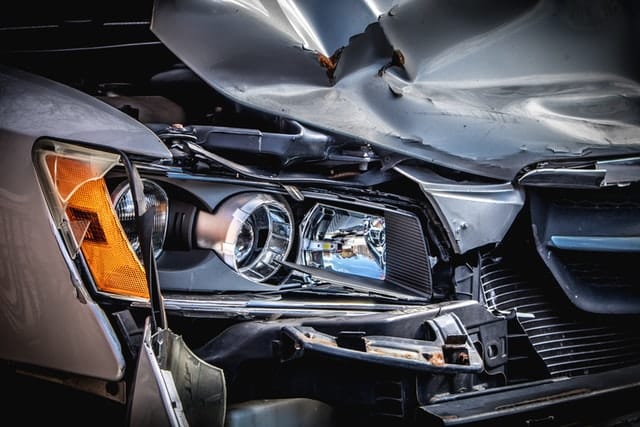
The most common reason for this is that the deer is frightened and confused.
When a deer suddenly runs out in front of a vehicle, it may run in the direction of the car when it thinks it’s running away. A confused deer may suddenly jump out in front of a car because it needs to cross the roadway to get to a feeding or sleeping area.
When driving at night, your headlights may also stun and confuse the deer, making it disorientated. This is why it’s so important to drive cautiously if there is any chance at all that deer may be in the area.
How to Avoid Deer Collisions
One of the most effective steps you can take to make a collision with a deer less likely is to watch out carefully for relevant road signs. Look out for yellow hazard signs with a picture of a deer.
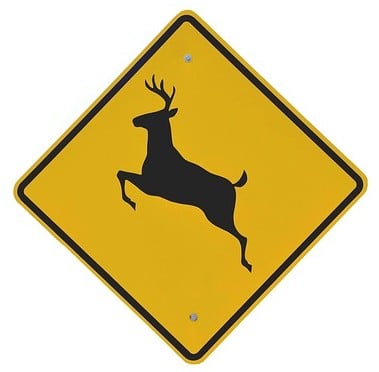
These are often found on routes that are known for having deer nearby that may cross.
It’s always important, and your responsibility as a driver, to avoid distractions (such as eating or cell phones) while driving. However, this becomes even more critical when driving in an area where there may be deer.
Your attention to the road and animals at the side of the road that may suddenly jump in could easily make the difference between life and death in a heartbeat.
If there isn’t much traffic and the road has at least four lanes, try to keep your car near the center. Being in this position will give you more reaction time if a deer suddenly runs into the road.
Be Proactive to Avoid Deer Collisions
If you’re driving and see a deer in the road, try honking your horn. Hold your hand down for a few moments. This could frighten the deer away from your vehicle and make a collision less likely.
If you happen to see a deer running across the road further ahead, there’s a strong likelihood that another deer will follow soon. Make sure you slow down and exercise greater caution as you continue to drive.
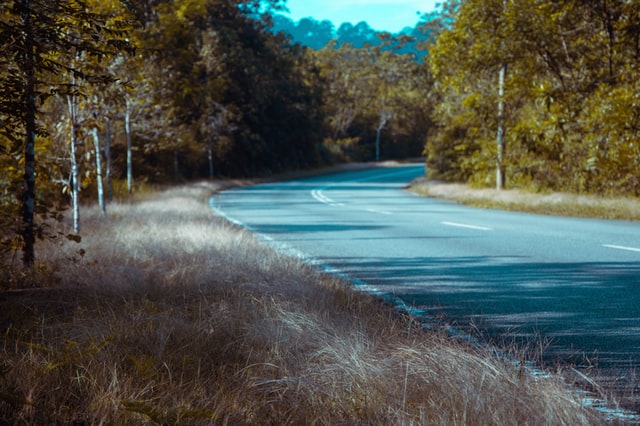
If you notice a deer positioned near the road, slow down your speed and sound your horn.
Deer have excellent hearing in terms of being able to tell the direction from which a sound is coming. Sound your horn a few times so that the deer can get a strong sense of where you are. This will make the deer more likely to go further away from the road.
Stay cautious, however, as animals are always unpredictable. The deer may not do what you expect. Remember to slow down and proceed with the utmost caution.
It’s also important to use your high beams when you’re traveling at night in areas where there could be deer. The light will help you see any deer that may be at the side of the road and that may suddenly shoot out in front of you.
Oftentimes, the light from your high beams can create a glowing reflection in the deer’s eyes that you can see before they go onto the roadway. Don’t underestimate how fast deer can be.
Improve Your Field of Vision
Remember to have your high beams on if you’re in a rural or suburban area at night.
This will help because it will make you more likely to see any deer at the side of the road. Just be mindful of other drivers around you, especially oncoming traffic that you can temporary blind with your high beam lights.
Also be aware that deer may be confused by your high beams. That is why you must drive especially slowly and cautiously. Remember that when deer are confused, they become even more unpredictable. Don’t assume that just because a deer seems to have turned around or moved away from the road that it won’t suddenly come back. This can happen in the blink of an eye.
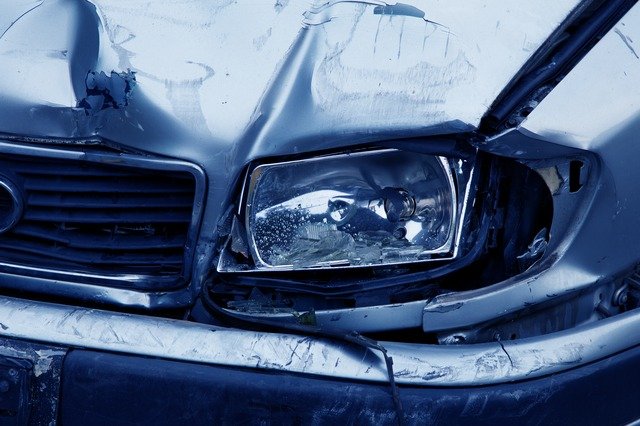
Some of the spots along the road that you should keep an especially keen eye on include the edges of forest areas and ditches. A deer may suddenly emerge from a ditch and you will have very little time to react, especially if you’re not being cautious.
Don’t Underestimate the Danger of Deer Running into Cars
As we’ve seen here, deer collisions are very dangerous not only for the deer but the car’s occupants as well. As we discussed earlier, understanding and remembering information about deer behavior, movements, and seasonal patterns is key to keeping yourself safe on the road in areas where there are deer.
You now understand the perplexing behavior of deer that run into the road and even in the direction of vehicles. Keep all of this and the tips we have provided in mind the next time you are driving in areas with deer.

